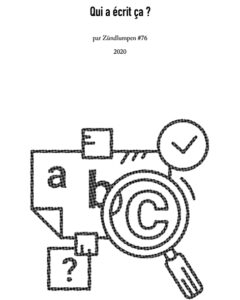
A brief overview of modern forensic linguistics methods for determining authorship.
The following article tries to give an overview from a non-technical perspective and to make a corresponding evaluation. There are some academic publications on this topic that could be evaluated for a better assessment. However, my main purpose here is just to raise the issue, not to provide a sound and conclusive view so if you know anything more, publish it!
Avoiding traces that could be your undoing down the road – perhaps even after years or decades – is probably of interest to most people who occasionally commit a crime and come into conflict with the law. Avoiding fingerprints, avoiding DNA traces, avoiding shoe prints and textile fiber traces or at least disposing of clothing afterwards, avoiding surveillance cameras, avoiding tool traces, avoiding recordings of any kind, recognizing surveillance, etc. – all this should be a concern for anyone who commits crimes from time to time and wants to protect themselves from identification. But what about those traces that often arise only after a crime has been committed, out of the urge to explain one’s deed anonymously or even by using a recurring pseudonym? When writing and publishing a communiqué?
My impression is that in many cases no special attention is paid to these traces despite a rapid technological development of analytical capacities. This may be intentional, negligent, or a compromise of competing needs. Without wishing to make a general suggestion here on how to deal with these traces – after all, everyone must determine that for themselves – I would like to outline the methods the investigative authorities in Germany and elsewhere are currently (probably) working with, what seems possible in theory, and what could become possible in the future.
Perhaps I should note in advance that everything or at least most of what I present here is scientifically as well as legally controversial. I am also less interested in the legal validity of linguistic analyses – and not in the scientific one either – than in whether it seems plausible that these investigations could guide a surveillance effort, because even if a trail is not useful in court by itself, it could still lead to other, useful trails. Continue reading “Who wrote that?”
